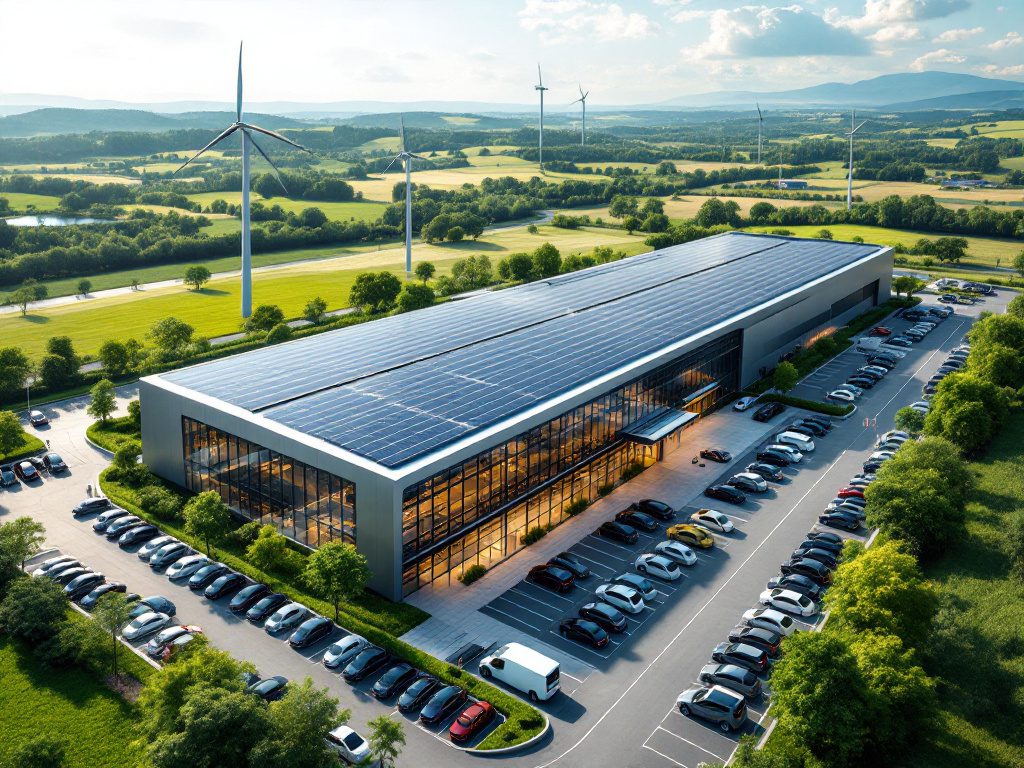Big Promises in the Heartland: Can Incentives Deliver Real Progress?
Springing up on nearly 400 acres of Midwestern land are ambitions much larger than any single electric vehicle. Rivian Automotive’s new $120 million supplier park, nestled beside its bustling Normal, Illinois, manufacturing plant, marks the latest evolution in the race to anchor America’s clean energy future. The supplier park isn’t just a physical expansion—it’s an experiment in whether a blend of state-backed incentives and forward-thinking manufacturing can yield not only cars, but also good-paying jobs, community investment, and economic renewal for regions left behind by industrial decline.
The core pitch sounds familiar: government and business collaborating to harness the next big wave—in this case, electric vehicles. Illinois is rolling out nearly $16 million in incentives to grease the skids, including $5 million in Reimagining Energy and Vehicles (REV Illinois) tax credits spread over two decades, as well as capital grants and infrastructure support. Governor JB Pritzker, eager to position Illinois as an EV powerhouse, lauds these public investments as shrewd bets. But do incentives like these spark real, lasting prosperity or mostly subsidize companies seeking the next handout?
The details go beyond press releases. Rivian’s supplier park will invite component manufacturers to co-locate, echoing a model successfully deployed by Ford in Chicago two decades ago. That supplier network helped anchor Ford’s operations, reducing costs and stabilizing employment. Yet, it also took vigilant oversight to ensure that promised benefits materialized on the factory floor—something Illinois policymakers and residents must now keep firmly in their sights. According to Harvard economist Dani Rodrik, “Incentive packages work best when there are firm clawbacks and follow-ups, not when states simply race each other to the bottom.”
Reimagining the Midwest’s Industrial Landscape
Rivian’s announcement arrives at a crucial moment for both the company and the community. While the startup’s R1S SUV, R1T pickup, and signature Amazon delivery vans have garnered glowing reviews from drivers and critics alike, Rivian remains, like most EV hopefuls, in an expensive race to scale up and achieve profitability. The supplier park, set for completion next year, is central to this strategy: by pulling key suppliers closer, the company seeks to cut costs, speed production, and smooth the complex logistics of modern auto assembly.
Operational improvements are clear. An underground tunnel is planned to move parts between the supplier park and main plant, reducing truck traffic on local roads and easing wear on community infrastructure—a boon for Normal, whose residents often bear the brunt of industrial traffic. Additionally, Rivian’s “kitting and sequencing” teams will prep materials on-site, boosting productivity while fueling the company’s signature drive for efficiency. “This isn’t just about building cars faster,” said labor expert Prof. Susan Helper of Case Western Reserve University, “but about creating a sustainable supply chain and good manufacturing jobs that can anchor communities for decades.”
Yet, these numbers deserve scrutiny. Initial figures anticipate about 100 new direct Rivian jobs, with the possibility of several hundred more as supplier firms set up shop. Critics often point to the small size of such commitments compared to lavish tax packages, warning that public funds must always serve public good—not just corporate profit margins.
“A supplier park can only pay dividends if the jobs are high-quality, the environmental standards are strong, and local communities have a real say in how growth unfolds.” — Labor organizer Mariah Sanchez
Too often, promises of “good jobs” and economic rejuvenation evaporate when rigorous oversight and accountability fade. Studies by the Good Jobs First watchdog group highlight frequent shortfalls nationwide, from missed hiring targets to wage suppression. Ensuring Illinois avoids these traps will require not only vigilance from regulators but involvement from local stakeholders at every phase of development.
Building an Equitable Green Economy—Or Subsidizing Corporate Growth?
At a time when clean energy investment is reshaping the country’s economic map, Illinois’s aggressive deal-making with Rivian stands as both a blueprint—and a cautionary tale. On one hand, these incentive-fueled investments can help counter reactionary, conservative efforts to tether economic growth to fossil fuels. They allow states like Illinois to leap ahead, extending the promise of well-paid, union-friendly manufacturing jobs to communities eager for renewal, and accelerating the national transition to cleaner vehicles.
History offers both encouragement and warning signs. Ford’s experience in Chicago showed that stable supplier networks bolster local economies and corporate resilience. At the same time, lopsided tax deals in neighboring states sometimes led to windfalls for multinationals, but too often left cities with broken promises and mounting deficits. The difference? Whether local leaders and state officials enforce strong labor standards, living wage benchmarks, and environmental stewardship—as opposed to letting companies pocket subsidies without reciprocal commitments.
Beyond that, Rivian’s massive $1.5 billion expansion in Normal, announced last year with a separate $827 million state incentive package, casts light on the broader stakes. Will these public investments yield not just jobs, but long-term prosperity for workers and neighbors across Illinois? “It’s not enough to build a new industrial park or launch a greener truck,” said environmental activist Marcus Rutherford. “The measure of success is whether families in Normal actually have a more secure future than they did before.”
With construction already underway and the promise of new vehicles—and new jobs—on the horizon, the world is watching. Americans who care about climate progress, economic fairness, and revitalized local economies know that real progress requires more than just ribbon cuttings and celebratory headlines. Attention must turn now to holding both company and government to their higher promises: good jobs, robust oversight, climate responsibility, and a seat at the table for everyday people. For everyone invested in America’s transition to a cleaner, fairer economy, the stakes couldn’t be clearer.

